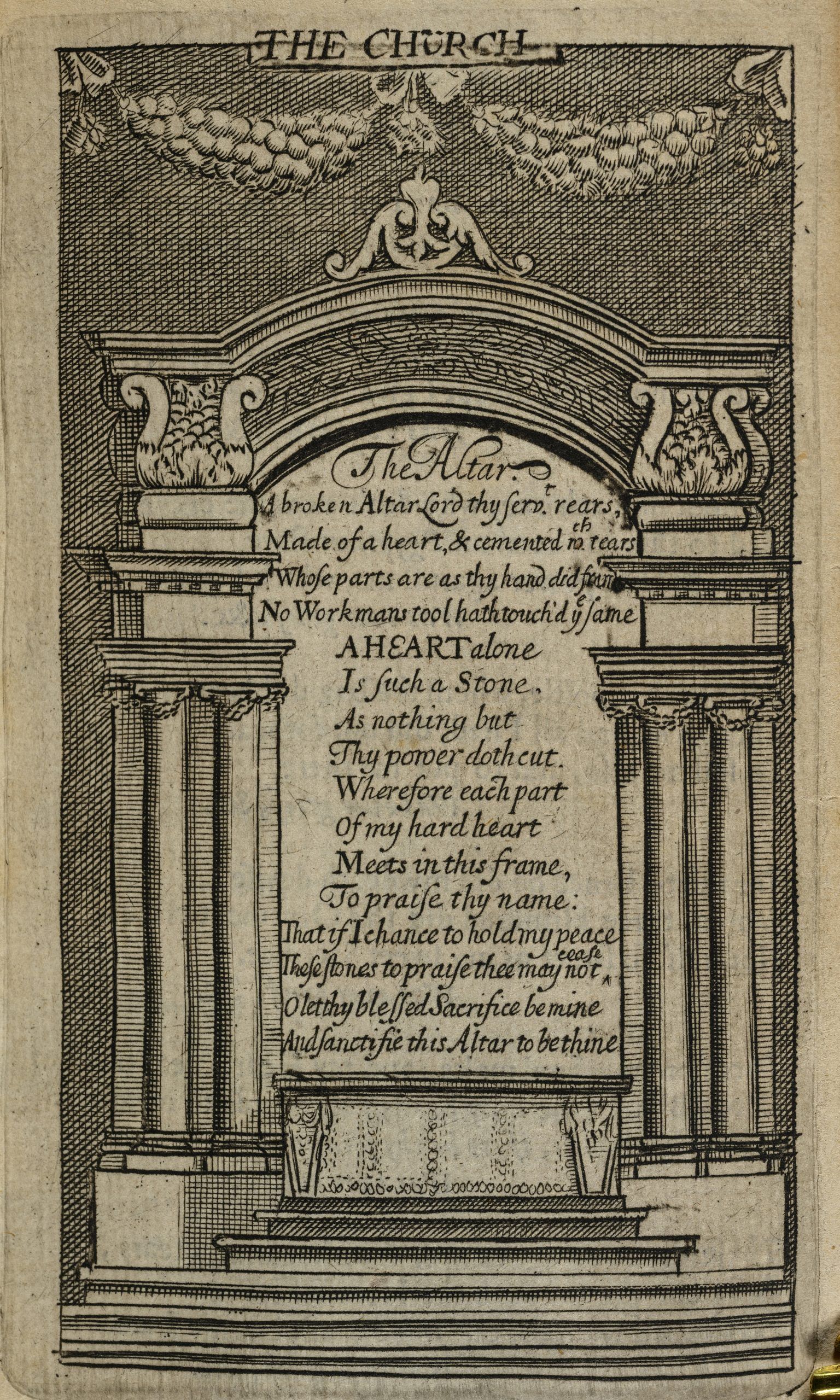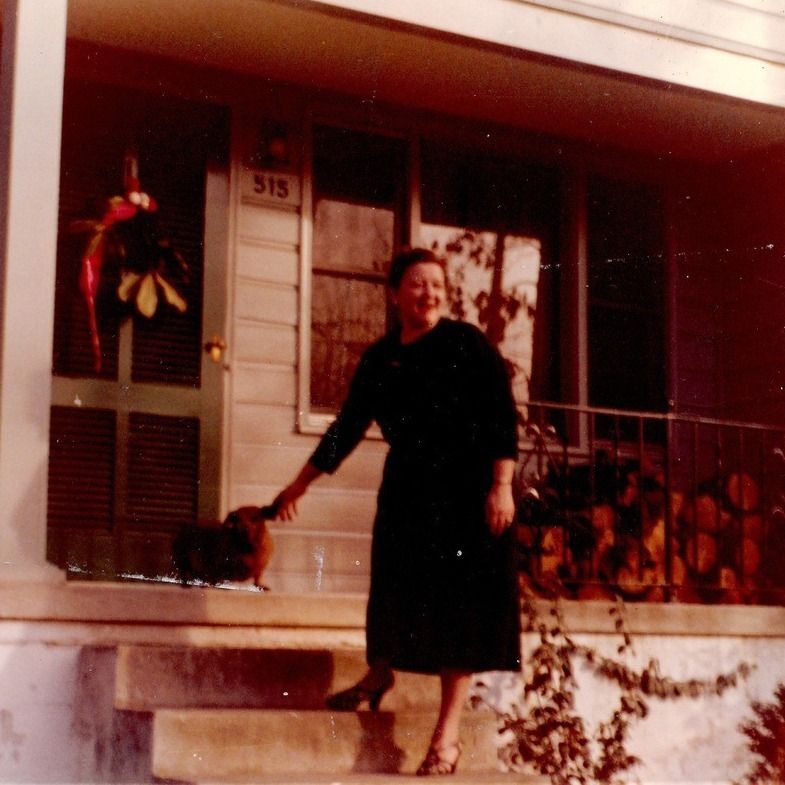Dr. Christopher Hodgkins showcases the UNCG Herbert collection in the photo above. “Our Herbert collection is one of the world’s best, ranking with those at Harvard, the Folger Shakespeare Library, and the Bodleian at Oxford.”
Over the course of three decades at UNC Greensboro, Dr. Christopher Hodgkins has served as author or editor of eight books on Renaissance literature, the Bible, and the British imperial imagination. Along the way, he’s been at the forefront of efforts to re-shape the way we read and interpret the writings of seventeenth-century English poet and clergyman George Herbert.
“Nearly all of Herbert’s poems are quite brief,” say Hodgkins, “but they’re all different. He’s a profound artisan, a craftsman of tremendous precision.”
Herbert gives his readers, Hodgkins says, “a master class in craft: how to handle a variety of voices within an individual lyric poem and throughout a sequence, how to stir surprise and drama and wonder with just a few words, how to experiment with form and structure in creative ways that are not quite free verse.”
Herbert also resonates with Hodgkins’ own Christian outlook – from his first reading of Herbert’s “The Temple,” published posthumously in 1633, Hodgkins felt Herbert was putting into words much of his own experience with God. But he notes that Herbert has had a huge following among secular readers and poets as well, despite the devotional nature of his poetry. “There’s something universal in Herbert’s work that appeals across these divides of ideology and belief,” he says.
“The night before King Charles I was beheaded by the Puritans in January of 1649, he is said to have read ‘The Temple.’ But many of the Puritans – including some who beheaded the king – were reading ‘The Temple,’ too.”
 One of the secrets of Herbert’s success was the design of ‘The Temple’s’ early editions. It came in a small duodecimo book – about the size and shape of a modern smartphone – so that the book fit in your pocket and could be carried everywhere. It even had an index for locating poems on different topics to interest varied readers: ‘Grief’ for some, ‘Gratefulness’ for others, and everything from ‘The Sinner’ to ‘The Star,’ from ‘Doomsday’ to three poems simply called ‘Love.’“
One of the secrets of Herbert’s success was the design of ‘The Temple’s’ early editions. It came in a small duodecimo book – about the size and shape of a modern smartphone – so that the book fit in your pocket and could be carried everywhere. It even had an index for locating poems on different topics to interest varied readers: ‘Grief’ for some, ‘Gratefulness’ for others, and everything from ‘The Sinner’ to ‘The Star,’ from ‘Doomsday’ to three poems simply called ‘Love.’“
Hodgkins’ own research has expanded modern understandings of the Cambridge-educated poet-priest. “He’s mainly a figure who’s interested in the inner spiritual life, but for a long time, people assumed that’s all that interested Herbert. He was seen as like a medieval monk who retired from the world.”
Yet, in comparing Herbert’s poetry with other texts, Hodgkins found that Herbert continued to be far more engaged with current events and politics than many nineteenth- and twentieth-century literary critics recognized. “We discovered in his writings that even while he was out in this little village parish church in Wiltshire, he was still thinking very pointedly about national and international politics of his time. We now see him as much more topically engaged. He was a member of Parliament and wrote about how to deal with contemporary social problems and political issues – including a poetic critique of rising imperialism.”
Hodgkins’ initial interest in religious poetry and the political and religious contexts for literature brought him to what he calls the question of the imperial imagination, a subject of his second book.
“How do people imagine their right to go and either take or conquer – or colonize – other lands and people? Do they just say ‘I’m doing it because I can?’ Usually not. Various European explorers sailed across the ocean and found lands inhabited by other peoples – and they built a system whereby they could exploit those resources while telling themselves they were bringing blessings to those people.”
Today, Hodgkins continues his exploration of how cultures collide, collaborate, or combine – specifically in the context of transatlantic exchange – through his work with the Atlantic World Research Network. Connecting scholars across six continents, the UNCG-based network, which was founded and is directed by Hodgkins, is approaching its 20th anniversary.
With a $300,000 grant from the National Endowment for the Humanities, Hodgkins and co-editor Dr. Robert Whalen of Northern Michigan University are now editing “George Herbert: Complete Works” for Oxford University Press.


Pictured here are two versions of “The Altar” from different editions of “The Temple” in UNCG’s collection: a second edition from 1633 and a tenth edition from 1674. The piece is one of Herbert’s best-known “shaped” poems, which use visual elements, Hodgkins says, to reinforce and add meaning.
 ‘The Altar’ is shaped like an ancient Hebrew stone sacrificial altar and opens Herbert’s sequence of poetry titled ‘The Church.’ Significantly, it is also shaped like the letter ‘I,’ for Herbert’s ‘Altar’ is ‘made of a heart, and cemented with teares.’ The poet offers up his poem and his book and himself for divine service.“
‘The Altar’ is shaped like an ancient Hebrew stone sacrificial altar and opens Herbert’s sequence of poetry titled ‘The Church.’ Significantly, it is also shaped like the letter ‘I,’ for Herbert’s ‘Altar’ is ‘made of a heart, and cemented with teares.’ The poet offers up his poem and his book and himself for divine service.“
Hodgkins has served as author or editor of four books that deal directly with Herbert, and co-edited “The Digital Temple,” which was selected by the American Library Association’s Choice magazine as an Outstanding Academic Title of 2013.
“The Digital Temple” allows online users the opportunity to explore manuscript versions and the first print edition of Herbert’s most celebrated work.
Hodgkins, who has twice held UNCG’s Class of 1952 Distinguished Professorship in English, has also organized a series of conferences focused exclusively on Herbert: the first in Salisbury, England, in 2007. The collective success of these events – taking place from Paris to North Carolina to Wales to Arizona – paved the way for him to found the George Herbert Society, with UNCG as its home base. Their next conference is planned for June of this year at Cambridge University.
His research and work to convene other scholars with similar interests has earned Hodgkins a reputation as one of the leading Herbert experts in the world. Now, with a $300,000 grant from the National Endowment for the Humanities, he and co-editor Dr. Robert Whalen of Northern Michigan University are editing “George Herbert: Complete Works” for Oxford University Press.
“The Oxford Texts,” notes Hodgkins, “bring major and now rediscovered writers into prominence and put them in a long-lasting physical form. The idea behind those is to have intelligent and durable introductions, brief biographies of the figures involved, running annotations that explain archaic terminology, and some commentary on the critical and reception histories of the works.”
The forthcoming series will appear in three volumes instead of one, mainly because it will include a thorough exploration of the history of the texts, as well as the history of criticism on those texts. It will feature newly discovered manuscripts and also commentary interspersed throughout the individual works.
A little-known fact: the first modern biography of George Herbert came out of UNCG in 1977. The author was Dr. Amy Charles, who began working at the University when it was still Woman’s College. She also purchased with her own money almost every one of the earliest editions of “The Temple.”
“By the time of her death in 1985,” says Hodgkins, “she had donated all of these to UNCG Special Collections.” The collection was completed at the University through the work of Chancellor William Moran and Special Collections librarians Emmy Mills and William Finley.
“Thus our Herbert collection is one of the world’s best, ranking with those at Harvard, the Folger Shakespeare Library, and the Bodleian at Oxford,” he says. UNCG Libraries is a point of pride for Hodgkins. “I was here when Jackson Library acquired its millionth volume. I can only praise our librarians’ commitment to building and preserving our book collection – not just rare books but all books.”
The series will have a digital manifestation based at UNCG. University Libraries will work with Hodgkins and Oxford to mount a free-access resource that will allow online users to view all the multiple early “witnesses” or versions of Herbert’s work, both manuscript and print.
“That will be a lasting anchor for Herbert studies, to complement our world-class print collection right here at UNCG.”
Hodgkins says that when, in 1980, he first discovered “The Temple,” he couldn’t possibly have anticipated the ways Herbert’s poetry would shape his own life and career.
“I didn’t imagine I’d eventually become a Herbert scholar and eventually publish a three-volume complete works – with the same publisher of this little Oxford Classics book that a high school friend had just tossed into my hand. That is beyond my ability to plan. It began simply with a great admiration and enjoyment and love.”

